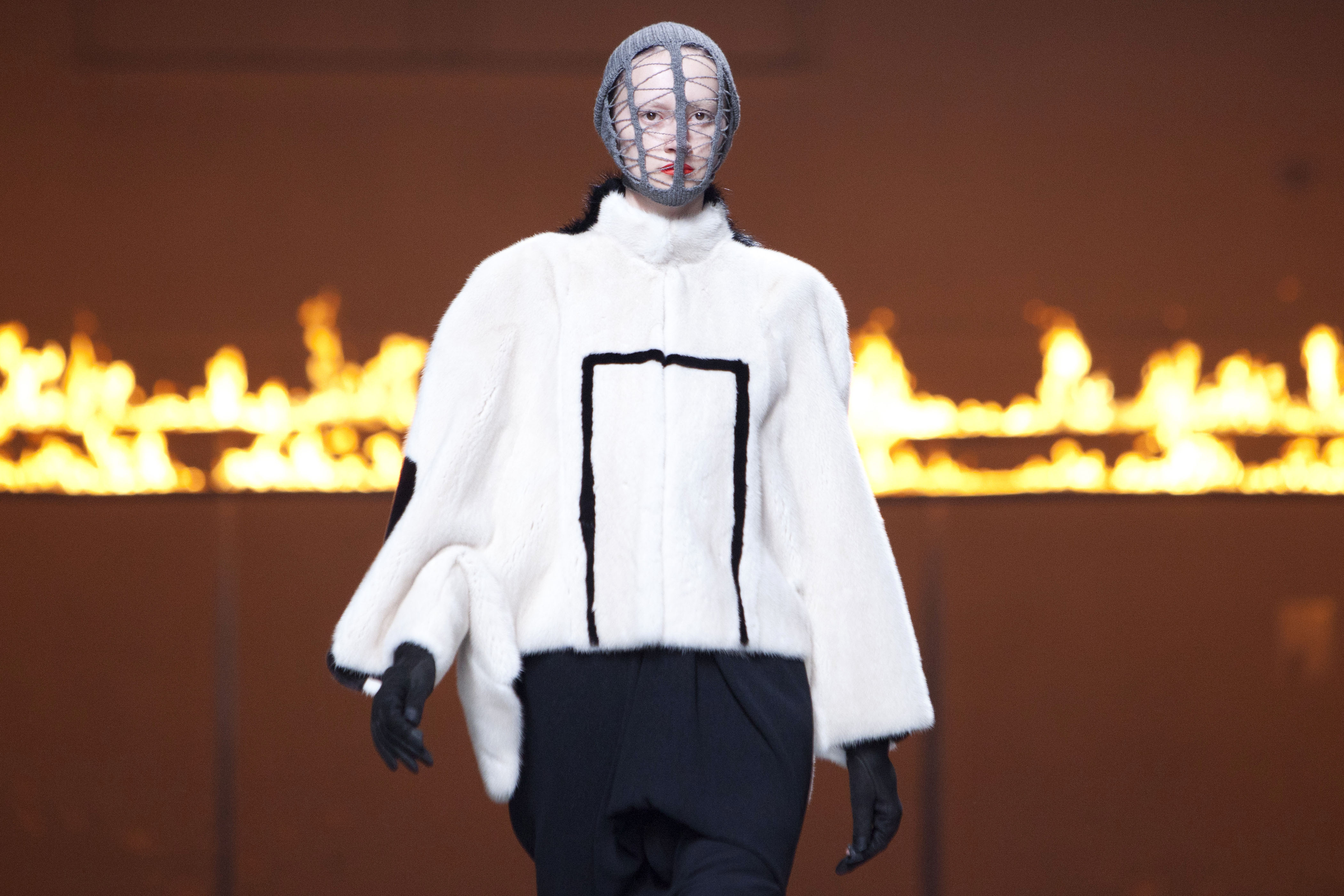PARIS - The mysterious story of the Faberge egg that has fascinated artists and writers for more than a century was the central theme of Balmain's spectacular ready-to-wear fashion show Thursday.
Designer Olivier Rousteing became captivated by the gilded ornament on display in Christie's while visiting New York and traced its history back to Imperial Russia. From this, sprung an exquisite fall-winter ready-to-wear collection of bejeweled velvets, Cossack tailoring with pearl and diamond embroidery, and rich high-collar clothes that conjured up Orthodox churchwear - a touch being seen more and more on the runway.
From the salons of Moscow to the streets of Brooklyn swept the fashion crowd on entering the street-wise universe of Manish Arora.
The Delhi-based designer channeled graffiti art in a colorful show with live spray painting that had the front row gasping.
Later in the day, both Barbara Bui and Nina Ricci treated spectators to solid, feminine collections that will translate easily onto the street. With robust business figures, maybe it pays to be commercially minded?
Friday, day four of Paris' nine days of shows, will feature powerhouses Christian Dior and Lanvin.
BALMAIN
Olivier Rousteing, on his tremendous sophomore outing at Balmain's show took the label back to its couture roots with a dash of Russian imperial glamour.
The collection's muse, the blue and gold Faberge egg that Richard Burton gave to Elizabeth Taylor, set the tone of the highly structured clothes that dripped with jewels.
Gems and pearls adorned hourglass silhouettes, harking back to a time of imperial wealth. Long orthodox vestments in black and sumptuous velvets consolidated a fall trend for the covered-up and ecclesiastical.
Le Grand Hotel Paris venue further transported spectators back in time to the glittering days of 18th century salons.
But 26-year-old Rousteing was not just about gemstones, and looked forward not back.
Since he was catapulted to the label's head a year ago, he's been trying to turn the page on what some have described as the house's "trash factor." Thursday's show managed to achieve this, without losing any of the red-carpet glamour that re-popularized the house under Christophe Decarnin.
Rousteing revisited the house's signature jacket, making it oversized and sharpening it into an ornament.
Pants were relaxed to give the silhouette a more fluid look, and boyish cropped pants were paired with a perfecto jacket and vest.
The lion's share of the bejeweled pieces might not have been made in spirit of ready to wear, but they provide a strong direction for the iconic house's future.
MANISH ARORA
Manish Arora hit the nozzle on the graffiti can on Thursday, combining the neon yellows, fuchsias and deep purples of street art with 1950s silhouettes.
The Indian designer explored a Brooklyn cityscape in which tiny floral brocades teeming with color peeped through cracks in brick-colored pencil skirts.
Short coats and stiff A-line skirts gleamed with a metallic finish, reminding us of the railroad tracks of Paris' Austerlitz train station, a stone's throw away from the show.
Models in loose, flared graffiti dresses with sporty straps amused the crowd as they stopped - mid-catwalk - to camouflage with the painted backdrop, like urban chameleons.
A rich mix of materials was on display, including dyed Scandinavian Saga fur, crepe and silk satin. But it was a shame that in many of the pieces the fabrics were colored and embroidered to near-death, diminishing their visual quality.
The show ended to a round of applause but also some coughs - as the fumes from the freshly graffitied set wafted toward the front row.
BARBARA BUI
Barbara Bui's offering shows she really knows how to put the ready in ready-to-wear with an elegant collection of lames, woolens and flowing dresses that the models could have worn straight out onto the street.
It was perhaps the relatively down-to-earth choice of muses, including Bianca Jagger and Jerry Hall (living, breathing people, not deities or aliens as some designers have it), that meant the clothes looked unfussy, clean-lined and wearable. Or was it that the brand is known to be commercially minded?
Either way there was plenty on the menu for the Bui woman: big alpaca jerseys, finely quilted satin tops and military greatcoats that rubbed accentuated shoulder to accentuated shoulder in a palette of black, pearl, brown and gold.
A beautiful and subtle jabot-collared silk blouse had a flavor of the glory days of Yves Saint Laurent, while several short cheongsams, also known as Mandarin gowns, ticked the box for the Eastern-looking trend this fall.
Breaking new ground is clearly not the seasoned designer's main priority. Showcasing covetable and highly buyable clothes is.
NINA RICCI
Nina Ricci's Peter Copping is a shameless romantic, and his strong show Thursday took the audience into the world of a young girl who playfully mixes and tears up clothes from her family's 1950s dress-up box.
Rough patchwork paneling featured on deconstructed evening coats in tweed, as if cut and re-sewn by a child's hand. Redundant fur cuffs dangled limp from the side of a sleeve, a fur stole had gloves attached with a toddler-style thread and rhinestone brooches and buttons were applied haphazardly to lace and organza cocktail dresses as if in haste after the wardrobe raid.
But beyond the daydreaming, the black-heavy collection exuded a strong, contemporary femininity.
More importantly, it marked a change in direction for Copping, creative director since 2009, in embracing the cinched glamour of a 1950s silhouette.
"The A-line look makes it feel different to my previous work," the British designer said. "It's about nonchalance and comfort."
Comfort is often synonymous in ready-to-wear with "sellable." Here, the house has no need to worry.

